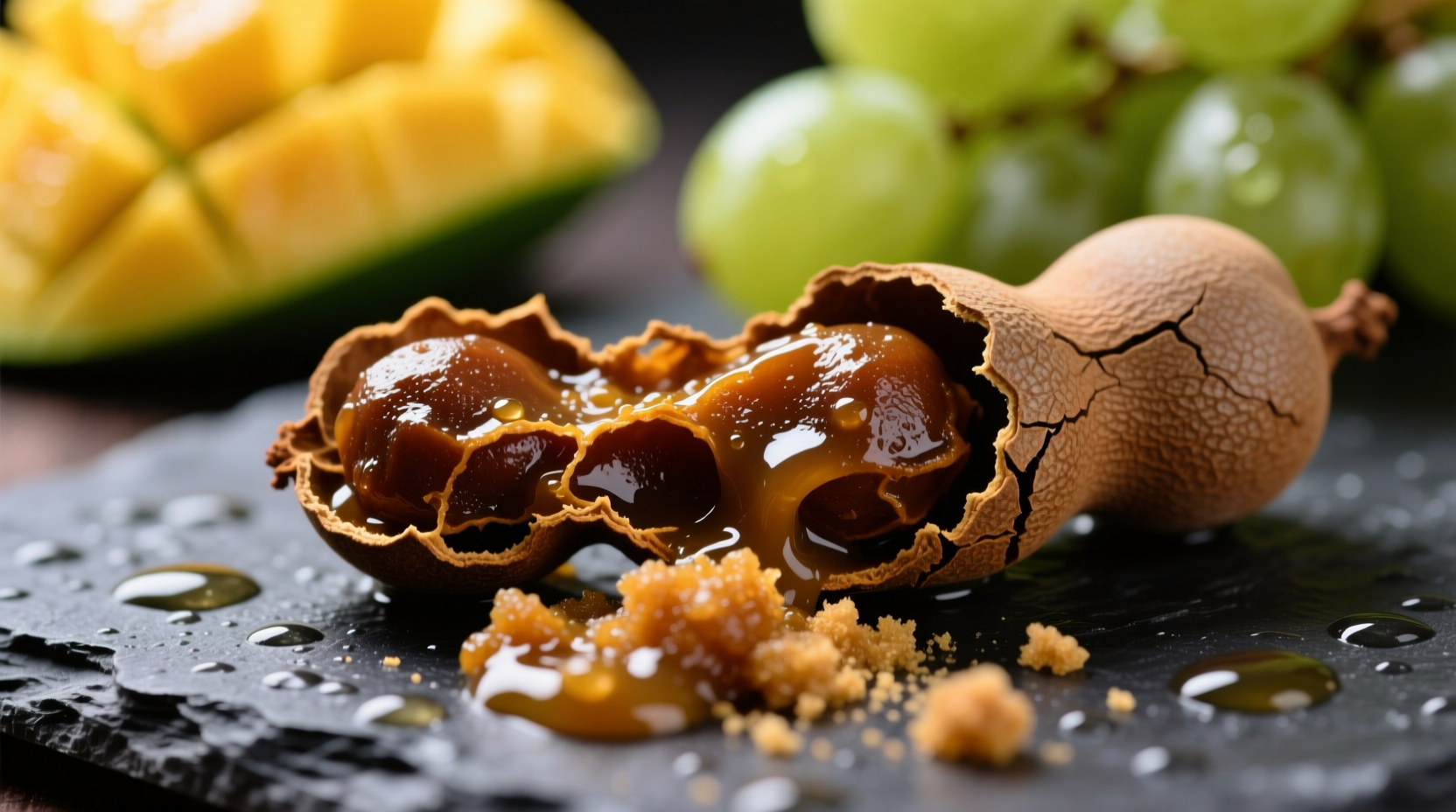Understanding Tamarind's Unique Flavor Journey
When you bite into fresh tamarind pulp, you'll experience an immediate burst of flavor that evolves in your mouth. The initial sensation is bright acidity reminiscent of citrus, quickly mellowing into deep caramel-like sweetness with subtle smoky undertones. This dynamic flavor transformation makes tamarind unlike any single-attribute souring agent.
Food scientists at the USDA's Agricultural Research Service have documented tamarind's distinctive chemical composition, revealing why it delivers such a multifaceted taste experience. The pulp contains significant amounts of tartaric acid (giving that signature tang), plus natural sugars that develop as the fruit ripens. This natural sugar-acid balance creates what culinary professionals call "flavor dimension"—a quality that builds complexity in dishes rather than simply adding sourness.
How Ripeness Transforms Tamarind's Taste
The flavor profile changes dramatically as tamarind matures. Understanding these stages helps you select the right form for your culinary needs:
| Ripeness Stage | Sugar Content | Acidity Level | Best Culinary Uses |
|---|---|---|---|
| Green (immature) | Low (15-20%) | Very High | Chutneys, sour soups, Thai pad thai |
| Brown (medium ripe) | Moderate (30-40%) | Moderate | Curries, marinades, beverages |
| Dark Brown (fully ripe) | High (45-55%) | Low | Desserts, candies, sweet sauces |
This ripeness spectrum explains why Southeast Asian cooks might use green tamarind for sour soups while Indian chefs select darker pods for sweet chutneys. The USDA's National Nutrient Database confirms these variations, showing how sugar content can double between immature and fully ripe tamarind.
Fresh vs. Processed: How Form Affects Flavor
Most home cooks encounter tamarind in processed forms, each delivering distinct taste experiences:
- Whole pods: Require soaking and straining but offer the most authentic flavor progression from tart to sweet
- Concentrate: Intensifies sour notes with less sweetness—ideal for quick applications where depth isn't critical
- Paste (1:1 ratio): Preserves balanced sweet-sour profile; most versatile for home cooking
- Powder: Delivers immediate tartness with minimal sweetness; best for dry rubs or spice blends
When substituting between forms, remember that processing concentrates certain elements while diminishing others. A study published in the Journal of Food Science found that tamarind paste retains 85% of the fresh fruit's volatile compounds responsible for its characteristic aroma, while concentrates lose nearly half these delicate flavor components.

Tamarind in Your Kitchen: Practical Flavor Pairings
Tamarind's versatility shines when you understand how its flavor interacts with other ingredients. Unlike single-note souring agents, tamarind complements rather than competes with other flavors:
With proteins: The fruit's natural enzymes tenderize meats while the acidity cuts through richness. In Mexican cuisine, tamarind-based sauces balance the fattiness of carnitas, while in Indian cooking, it enhances the earthiness of lentils in sambar.
With spices: Tamarind creates a flavor bridge between sweet and savory spices. When making Thai curry pastes, it harmonizes galangal's sharpness with palm sugar's sweetness. In Caribbean jerk seasoning, it tempers allspice intensity while amplifying scotch bonnet pepper's fruitiness.
With vegetables: Its acidity brightens earthy root vegetables. Try adding a teaspoon of tamarind paste to roasted beetroot dishes or lentil stews for surprising depth. Food historian Dr. Harold McGee notes in On Food and Cooking that tamarind's complex acids interact differently with vegetable cell walls than vinegar or lemon, creating more rounded flavor integration.
When Tamarind Might Not Be Your Best Choice
While versatile, tamarind has specific culinary boundaries. Understanding these prevents disappointing results:
- Delicate dishes: Its robust flavor overwhelms subtle preparations like white fish or light broths
- High-heat applications: Prolonged cooking diminishes its nuanced sweetness, leaving only sour notes
- Texture-sensitive recipes: The pulp's fibrous nature requires straining for smooth sauces
For applications where tamarind's complexity proves overwhelming, consider these alternatives based on your desired outcome:
- Need pure sourness? Try amchur (mango powder) or sumac
- Want sweet-tart balance? Use pomegranate molasses or verjus
- Seeking smoky notes? Try roasted tomato paste with a splash of vinegar
Buying and Storing for Optimal Flavor
Maximize tamarind's flavor potential with these practical tips:
For whole pods: Select pods with brittle, dark shells that feel heavy for their size. Avoid those with cracks or mold spots. Store at room temperature for up to 2 weeks.
For paste/concentrate: Choose products with minimal ingredients (ideally just tamarind and water). Check for a deep reddish-brown color—grayish hues indicate oxidation. Once opened, refrigerate and use within 6 months.
Pro testing tip: Before using older tamarind products, mix a small amount with warm water. Fresh tamarind should release vibrant aroma immediately. If the scent is flat or musty, it's lost its flavor vitality.
Unlocking Tamarind's Full Potential
Mastering tamarind's flavor profile transforms your cooking by adding dimension that single-ingredient souring agents can't match. Whether you're crafting authentic Pad Thai, enhancing Caribbean jerk seasoning, or experimenting with innovative fusion dishes, understanding tamarind's sweet-sour complexity helps you create more balanced, nuanced flavors. Start with small amounts in your favorite recipes, adjusting to taste as you discover how this ancient fruit can elevate your everyday cooking.











 浙公网安备
33010002000092号
浙公网安备
33010002000092号 浙B2-20120091-4
浙B2-20120091-4